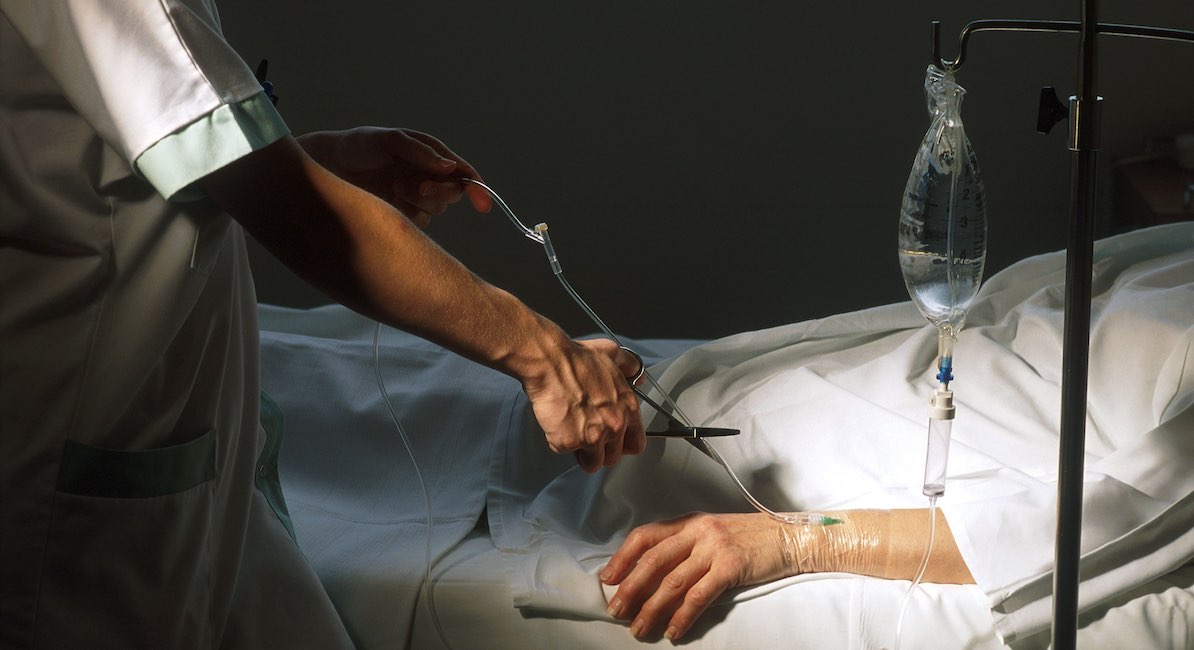The Sutter Family Residency Medical Program out of California has been offering residencies to train medical students in aiding patients’ deaths via assisted suicide, and those who participated in a small study revealed that they enjoyed helping people to die.
The 2023 study, published by the Journal of the Association of American Medical Colleges, found that a majority of the residents surveyed continued the assisted suicide practices post-graduation and some even felt “gratified” by it.
The study found its beginning with the Sutter Family Medicine Residency Program (FMRP), which began in 2018 and was aimed at postgraduate medical students heading into their second year of residency. Including graduates from 2019 through 2022, the researchers surveyed 28 graduates, collecting data from 21 former residents. Of those 21, 17 had opted to participate in training for Medical Aid in Dying (MAID), and 12 graduates were practicing in a location where physician-assisted death is legal. Seven out of the 12 graduates (58%) were still practicing MAID after graduation and five out of these seven graduates (71%) reported “that their aid-in-dying work was more rewarding than their other clinical responsibilities” (emphasis added).
The irony is that residents who are training to euthanize their patients were given the goal of providing “patient care that is compassionate, appropriate, and effective for the promotion of health, prevention of illness, and treatment of disease.”
Although this study size is quite small, FMRP is the first of many residency programs that are beginning to offer “training” in assisted suicide procedures. The study cites the results from a 2021 survey of U.S. internal medicine residents, which found that 81% of participants were “interested in receiving MAiD training, with 34% responding they would be likely to participate in MAiD after graduating.”
READ: REPORT: Canadians requesting assisted death are rarely denied, often killed in under two weeks
The study encourages a “broad dissemination of residency MAiD curricula” in hopes of providing a more in-depth assessment of this and other residency programs with the goal of meeting an alleged high “demand for MAiD training in residency.”
Wesley J. Smith, senior fellow at the Discovery Institute’s Center on Human Exceptionalism, responded to the research in a piece at National Review, stating, “Still, most doctors today do not participate [in physician-assisted death] where such practices are legal. None should. And the fewer who do, the less it will be normalized.”
He added, “Great efforts are being made by activists and media to normalize assisted suicide as the most ‘dignified’ means of dying. And now, we can see that this agenda has extended to include a push to increase the training of doctors in this practice, with the apparent support of the Association of American Medical Colleges.”
The California End of Life Option Act of 2016 sparked the Sutter FMRP to begin its embark on broadening the training field for assisted suicide in the U.S. The study poses its motivation for reviewing graduates’ continued “skills” by claiming an as-of-yet unproven idea of a “care gap” in the American assisted suicide field and noted that current physicians feel “inadequate” or “ill-prepared” for handling assisted suicide requests.
The program allowed residents to take on one of two roles: prescribing physician or consulting physician. Prescribers had two appointments with their patients, and consultants had only one. Prescribers were expected to set up further consultation appointments and exact a plan for the prescription “timing and ingestion” with all involved parties (i.e. the patient, the patient’s family, and hospice care). It is noted that “residents are encouraged to attend the planned death of at least 1 of their MAiD patients during residency, although this is not required.”
Since California legalized assisted suicide back in June 2016, 4,287 people have died from ingesting lethal medication with “3,911 of those people already receiving hospice and/or palliative care,” according to the California Department of Health. In 2023 alone, 884 people died from assisted suicide.







